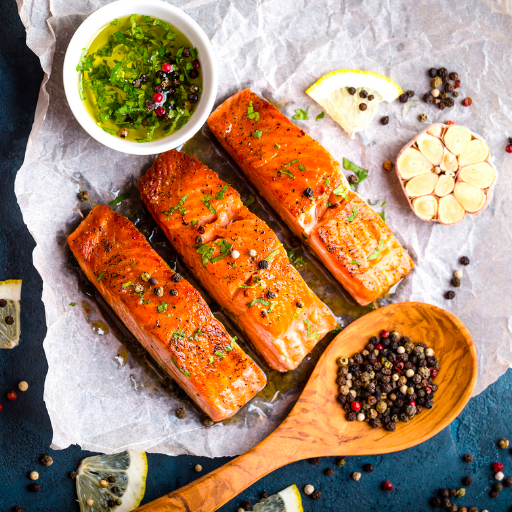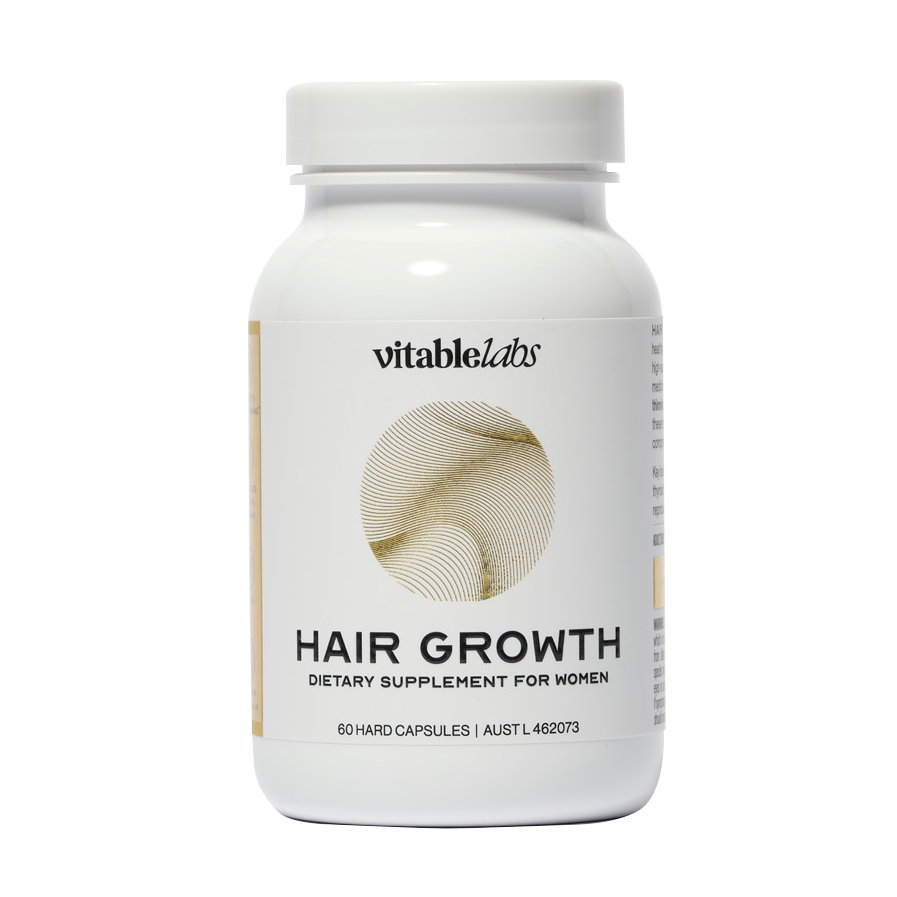Wellness Blog
The content on this blog is for general informational purposes only and is not a substitute for professional medical advice, diagnosis, or treatment. Always consult your healthcare provider before making changes to your health routine or taking new supplements.
Did you know men use energy differently than women? Here are top energy-boosting tips for men!
Just by observing how men and women are built physically, you can tell that a lot of what goes on underneath the hood is different too! For example, you, a male, might be doing intense cardio with a female partner at the gym. Both of you perform the exact same routine with eyes set on the same outcome, but a couple of weeks down the road, you end up cutting more weight than her. That's because both men and women are hardwired differently. The same can be said about energy. Because of body composition and genetics, men have a higher metabolic rate than women (1, 2). In addition, men are generally less efficient at storing fat for energy use. If a man and woman were to observe the exact same diet, exercise, and lifestyle habits, evidence suggests the man would generally lose more weight and use up more energy than his female counterpart (2). One reason for this is men have higher basal metabolic rates (BMR) is because of the hormone, testosterone. Men produce much more of this hormone. More testosterone can lead to an increase of muscle mass. As muscle mass increases, so does the ability to burn calories or energy at a much higher rate.How to increase energy for menHere are some tips men can use to increase their energy levels:Good eating habitsEating is essential to having energy, but the kinds of food we eat also affect our bodies. For instance, processed foods contain high levels of saturated fat and sugar, which may cause health concerns down the line (11). It would be best to aim for a good balance of fruits, vegetables, lean proteins, and whole grains.Overeating, as well as not eating at proper times may also have negative effects (12). Overeating can cause you to put on extra weight, and may lead to sluggishness, which might dissuade you from exercise. On the other hand, skipping meals can result in lower energy. Since men typically burn more energy, they can often feel the effects of skipped meals more than women.Consult with a nutritionist or a doctor to find out how much of each food group you should consume per meal daily.Proper exerciseMen lose testosterone as they age. However, testosterone is an important factor to keeping up energy levels (13). One way to keep testosterone levels up is exercise, which not only increases energy, but boosts testosterone (14).Sleeping wellThere are some sleep conditions that men are more prone to than women (3). These can result in poor quality of sleep and less time in a restful restorative state, which can result in fatigue and drowsiness during the daytime (15).Proper supplementationMen may not be able to get all of their nutrition needs to boost and maintain energy levels from diet alone. In these situations, supplements might be a great idea to ensure you receive sufficient amounts of each nutrient on a daily basis.How to get energy with supplementsHere are some nutrients and minerals that can be part of your everyday energy supplements plan:IronIron is important for men who exercise and workout as muscles use up iron to burn energy (4).*Iron should only be taken if prescribed by your doctor.AshwagandhaThis wonder herb is great for improving the quality of sleep (5). This herb's chemical components, or alkaloids, are thought to have sedative qualities which can maintain physical endurance and stamina (16).MagnesiumMagnesium maintains and supports energy levels. Besides increasing energy, one study showed that magnesium also helped male individuals with impaired magnesium status to produce more testosterone in physical activity (6).B complexB vitamins support energy production through enabling the body to unlock the energy it needs to function from nutrients including carbohydrates, fat and protein.Acetyl L-carnitineAcetyl L-carnitine plays a critical role in energy production (8), specifically in burning fat for energy.Vitamin CVitamin C supports energy production9. It is necessary for the biosynthesis of carnitine, which is essential for the mitochondria in cells to produce energy.Vitamin B-12This vitamin supports energy production by helping metabolise the fats and proteins that you eat (10).Part of how to get energy is by making sure that you get all the nutrients that you need. You can achieve this by maintaining a healthy diet, or opt for supplementation if you believe you're not receiving sufficient nutrients from diet alone.As men, keeping our energy up is an essential part to living healthy. With Vitable's vitamin subscription service in Australia, you can have healthier, and more high-energy days. Our service of vitamin delivery and daily vitamins of custom vitamin packs can give that extra push that you need for all kinds of physical activity. Find out more about other areas that the above supplements can help you with:Iron | Ashwagandha | Magnesium | B complex | Acetyl L-carnitine | Vitamin C | Vitamin B12 *Always read the label. Follow the directions for use. If symptoms persist, talk to your health professional. Vitamin and/or mineral supplements should not replace a balanced diet.References: Sex Differences in Energy Metablosim Need to be Considered with Lifestyle Modifications in Humans (2011), Accessed September 15, 2021 from https://www.ncbi.nlm.nih.gov/pmc/articles/PMC3136178/ Men and Women Respond Differently to Rapid Weight Loss: Metabolic Outcomes of a Multi-centre Intervention Study After a Low Energy Diet in 2500 Overweight, Individuals with Pre-Diabetes (2018), Accessed September 15, 2021 from https://dom-pubs.onlinelibrary.wiley.com/doi/10.1111/dom.13466 Sleep Apnea (2020), Accessed September 15, 2021 from https://www.mayoclinic.org/diseases-conditions/sleep-apnea/symptoms-causes/syc-20377631 Iron (n.a.), Accessed September 15, 2021 from https://medlineplus.gov/iron.html Protective Effect of Withania Somnifera Dunal on the Behavioral and Biochemical Alterations in Sleep-Distrubed Mice (2007), Accessed September 15, 2021 from https://pubmed.ncbi.nlm.nih.gov/17585686/ The Interplay Between Magnesium and Testosterone in Modulating Physical Function in Men (2014), Accessed September 15, 2021 from https://www.ncbi.nlm.nih.gov/pmc/articles/PMC3958794/ Increased Target Tissue Uptake of, and Sensitivity to, Testosterone in the Vitamin B6 Deficient Rat (1984), Accessed September 15, 2021 from https://pubmed.ncbi.nlm.nih.gov/6727359/ Nutritional Supplements and Metabolic Syndrome (2008), Accessed September 15, 2021 from https://www.sciencedirect.com/science/article/pii/B9780123742407500127?via%3Dihub Vitamins and Minerals for Energy, Fatigue and Cognition: A Narrative Review of the Biochemical and Clinical Evidence (2020), Accessed September 15, 2021 from https://www.ncbi.nlm.nih.gov/pmc/articles/PMC7019700/ Vitamin B12 (n.a.), Accessed September 15, 2021 from https://lpi.oregonstate.edu/mic/vitamins/vitamin-B12 Food processing and nutrition (n.d.), Accessed September 29, 2021 from https://www.betterhealth.vic.gov.au/health/healthyliving/food-processing-and-nutrition#effects-of-processing-and-storage-of-food What happens when you overeat? (February 2018), Accessed September 29, 2021 from https://www.mdanderson.org/publications/focused-on-health/What-happens-when-you-overeat.h23Z1592202.html Sex, Energy, Well-Being and Low Testosterone: An Exploratory Survey of U.S. Men's Experiences on Prescription Testosterone (2019), Accessed September 29, 2021 from https://www.ncbi.nlm.nih.gov/pmc/articles/PMC6765788/ Increased physical activity has a greater effect than reduced energy intake on lifestyle modification-induced increases in testosterone (2016), Accessed September 29, 2021 from https://www.ncbi.nlm.nih.gov/pmc/articles/PMC4706091/ Sleep Deprivation (2021), Accessed September 29, 2021 from https://www.sleepfoundation.org/sleep-deprivation Ashwagandha Plus (n.d.), Accessed September 29, 2021 from https://research.get.vitable.com.au/ashwagandha-plus
Learn moreLifestyle factors that affect your energy levels
Energy serves as vital fuel for our body. We use it to go about our daily activities, facilitate all our bodily functions such as breathing, digesting food and keeping warm, and to support growth and repair of muscles.How does our body create energy?The energy in our body is composed of carbohydrates, proteins and fats that are broken down by our digestive system (1). Carbohydrates turn into glucose, proteins turn into amino acids, and fats turn into fatty acids. These are absorbed by our blood cells where they become adenosine triphosphate or ATP, which is what our body needs to work.However, there are a lot of factors that can affect how much energy and endurance we generate to go about our daily activities.Factors that affect body energyThe following are some factors that affect the energy we have:DietA balanced and healthy diet includes being able to eat from the five food groups every day. These groups include: Vegetables and legumes Fruits Grains and cereals Animal products such as lean meats, poultry, fish, chicken, eggs, and tofu Dairy products such as milk, cheese, and yoghurt (2). Eating the right kind and amount of food will give the body the energy it needs. This is because many important nutrients that support and maintain energy production can be found in what we eat.These include iron, which can be found in red meats, fish, eggs, and wholemeal pasta (16), and magnesium which can be found in spinach, legumes, and nuts (17).Iron helps maintain energy levels by assisting in many physiological processes such as metabolism, oxygen transport, and DNA synthesis, among others (3). Bear in mind that iron should only be taken if prescribed by your doctor.Magnesium, on the other hand, is vital in energy production as it stabilises the enzymes our body needs for the generation of ATP. Magnesium can maintain and support energy levels.ExerciseExercise helps build more energy and endurance. Besides boosting your stamina, how much you exercise may affect how much energy you have (13). A bit of exercise pushes your body to produce more mitochondria inside the cells of your muscles. Mitochondria turn glucose into energy. Having a greater number of them in your cells boosts your energy. In addition, being physically active also improves the circulation of oxygen, which allows your body to make better use of the energy.However, it can be useful to balance the energy we produce and the energy we use up as the body burns more energy when it is active (5). If the body uses more energy than it can produce, whether through exercise, or in going about our other daily activities, we may end up fatigued or tired.Taking in vitamins that support energy production such as vitamin C, vitamin B-complex and vitamin B12 can help boost energy levels to avoid this from happening.Vitamin C helps maintain energy levels by breaking down fatty acids and turning them into energy (6). Vitamin B-complex releases energy from the fat and carbohydrates in our body (7). Vitamin B12 maintains energy levels by converting carbohydrates into glucose (8).Alongside a balanced diet, a vitamin subscription personalised to your needs can help increase your energy needed for daily activities.Good quality sleepSleep is as important as having a healthy diet and leading an active lifestyle.When you sleep at night you go through non-REM (rapid eye movement) sleep, and REM sleep (15). During the final phase of non-REM sleep, also called deep sleep, or slow-wave sleep, the body repairs itself. During this period your body creates more ATP, boosting your energy levels (14).On the other hand, poor quality of sleep can have an impact on our body's energy levels (10). Sleep loss affects the quality of our energy and our performance during the day. When someone is sleep deprived, some tasks may require more energy than usual, and the ability of the body to overcome this can be limited (9).Incorporating energy boosting vitamins into your diet can help boost energy when you are having trouble getting sleep.Ashwagandha is an Indian herb that has a wide variety of benefits. It supports physical endurance and relieves symptoms of mild anxiety. This can help improve energy levels and normalise cortisone levels for stress management (11).Taking acetyl L-carnitine may also help replenish energy levels. This nutrient maintains energy levels by transporting long-chain fatty acids into the mitochondria, the cell's powerhouse13.Fatigue can be as a result of high or low blood pressure, heart and other chronic diseases, alcohol consumption, poor diet and other lifestyle risk factors13.Considering these factors can help you create the best vitamin subscription fit for you. Get started on improving your energy levels today with Vitable and personalise your own vitamin subscription. These are custom supplements that contain all your daily vitamin needs, brought right to your doorstep!Find out more about other areas that the above energy supplements can help you with:Adding these to your vitamin subscription can also help fight fatigue and tiredness, and boost energy when you need it.Iron | Ashwagandha | Magnesium | B complex | Acetyl L-carnitine | Vitamin C | Vitamin B12*Always read the label. Follow the directions for use. If symptoms persist, talk to your health professional. Vitamin and/or mineral supplements should not replace a balanced diet.References: Australian Institute of Personal Trainers Content Team. “3 Energy Systems in the Body”. Australian Institute of Personal Trainers: Aipt.Edu.Au. Published May 9, 2019 on https://www.aipt.edu.au/articles/2019/05/3-energy-systems-body-0. Accessed September 15, 2021. Health Direct Content Team. “A balanced diet”. Health Direct: HealthDirect.Gov.Au. Published April 2020 on https://www.healthdirect.gov.au/balanced-diet. Accessed September 15, 2021. Abbaspour, N., Hurrell, R., Kelishadi, R. “Review on iron and its importance for human health”. National LIbrary of Medicine: PubMed.Org. Published February 2014 on https://www.ncbi.nlm.nih.gov/pmc/articles/PMC3999603/. Accessed September 12, 2021. Jahnen-Dechent, W., & Ketteler, M. (2012). “Magnesium basics.” Clinical Kidney Journal. Published February 1, 2012 on https://doi.org/10.1093/ndtplus/sfr163. Accessed September 12, 2021. Better Health Content Team. “Balancing energy in and energy out”. Better Health Channel: BetterHealth.Vic.Gov.Au. Published April 23, 2018 on https://www.betterhealth.vic.gov.au/health/healthyliving/energy-in-and-energy-out. Accessed September 15, 2021. Tardy, A. L., Pouteau, E., Marquez, D., Yilmaz, C., & Scholey, A. “Vitamins and Minerals for Energy, Fatigue and Cognition: A Narrative Review of the Biochemical and Clinical Evidence.” National Institutes of Health: Nih.Gov. Published January 12, 2021 on https://www.ncbi.nlm.nih.gov/pmc/articles/PMC7019700/. Accessed September 12, 2021. Harvard School of Public Health Content Team. “B Vitamins”. Harvard T.H. Chan School of Public Health: Hsph.Harvard.Edu. Published September 18, 2012 on https://www.hsph.harvard.edu/nutritionsource/vitamins/vitamin-b/. Accessed September 12, 2021. Mount Sinai Health System Content Team. “Vitamin B12 (Cobalamin)”. Mount Sinai Health System: MountSinai.Org. Published on https://www.mountsinai.org/health-library/supplement/vitamin-b12-cobalamin. Accessed September 12, 2021. Engle-Friedman, M. “The effects of sleep loss on capacity and effort”. US National Library of Medicine National Institutes of Health: Nih.Gov. Published November 15, 2014 on https://www.ncbi.nlm.nih.gov/pmc/articles/PMC4608917/. Accessed September 15, 2021. Better Health Content Team. “Sleep deprivation”. Better Health Channel: BetterHealth.Vic.Gov.Au. Published June 30, 2016 on https://www.betterhealth.vic.gov.au/health/conditionsandtreatments/sleep-deprivation. Accessed September 15, 2021. Cleveland Clinic Content Team. “What is Ashwagandha?” Cleveland Clinic: ClevelandClinic.Org. Published May 2021 on https://health.clevelandclinic.org/what-is-ashwagandha/. Accessed September 12, 2021. National Institutes of Health Content Team. “Carnitine”. National Institutes of Health: Nih.Gov. Published March 29, 2021 on https://ods.od.nih.gov/factsheets/Carnitine-HealthProfessional/. Accessed September 12, 2021. Golen, T., Ricciotti, H., "Does exercise really boost energy levels?". Harvard Medical School: Harvard Health Publishing. Published July 1, 2021 on https://www.health.harvard.edu/exercise-and-fitness/does-exercise-really-boost-energy-levels. Accessed September 18, 2021. Harvard Health Publishing. "How sleep boosts your energy”. Harvard Medical School: Harvard Health Publishing. Published July 21, 2021 on https://www.health.harvard.edu/healthbeat/how-sleep-boosts-your-energy. Accessed September 18, 2021. Cleveland Clinic. "Sleep Basics". Cleveland Clinic. Last reviewed July 2020 on https://my.clevelandclinic.org/health/articles/12148-sleep-basics. Accessed September 18, 2021. Health Direct. "Foods high in iron". Health Direct. Last reviewed January 2021 on https://www.healthdirect.gov.au/foods-high-in-iron. Accessed September 18, 2021. Office of Dietary Supplements. "Magnesium". National Institutes of Health: Office of Dietary Supplements. Last updated August 11, 2021 on https://ods.od.nih.gov/factsheets/Magnesium-HealthProfessional/. Accessed September 18, 2021.
Learn moreHow age impacts energy levels: What you need to know
It's easy to fall into the mindset that energy levels are simply not the same as they were when you were a young spring chicken, but science tells us otherwise! The good news is you can feel vital, energised, and healthy at any age with the right lifestyle support. Read on to learn more.One of many indicators of good health is having enough energy to do things you have planned for the day, and having enough left to get you to the next day. This is linked to nutrition as it's where the body gets its energy. Carbohydrates, lipids and proteins that are broken down are transformed into different types of energy used for different functions of the body (1).Energy levels differ depending on factors such as the environment, physical activity, and age, among other things. For example, changes in seasons linked to high or low temperature can affect the body's metabolism rate, which may use up more energy in the body (2). Likewise, depending on the physical activity you'll be engaging in, it may need more energy than a sedentary activity (3).Let's zoom in on how energy is affected by age, and what you can do about it to ensure you optimise your workouts.How life stages impact energy levelsWhen it comes to energy, several factors account for the different levels required by different age groups. Some factors affected by ageing are body size, body composition and physical activity (3). Gender can also be one of the factors depending on situations like pregnancy and lactation, which can increase the energy needed by the body (4). There are also some cases where males have more energy needs compared to females.Measuring energy at rest by using resting energy expenditure or REE, it is observed that energy increases from infancy until age 60, from where it starts to decline (4). Energy levels are also relative to a person's body mass. Greater height and weight would mean that more energy is needed to maintain healthy bodily functions (5). It was seen in a study that older people's weight tends to decline with age, lowering the amount of energy they need at rest (6).Australians measure energy by kilojoules, allowing us to quantify the energy requirements for different age groups (5). According to the National Health and Medical Research Council, the estimated energy requirements for males performing sedentary activity are the following: Ages 19-30: 10.8 megajoules Ages 31 to 50: 11 megajoules Ages 51-70: 9.5 megajoules Age 70 and above: 7.9 megajoules (3). These requirements differ for females, where the amount of physical activity is quantified from 1.2, which is at rest and at 2.4 with strenuous exercise or sport (3).How to boost your energy through exerciseExercises can strengthen physical condition, mental health, and overall mood, but it can also improve one's energy levels (7). One study shows that with regular exercise, participants have felt less fatigued and more energised (8).Low intensity exercises such as yoga and pilates or strenuous routines such as P90X or high-intensity interval training (HIIT) can make a difference. However, different kinds of physical activity are more appropriate for some individuals, given the body's differing energy levels depending on how old a person is. A daily routine that incorporates a nutritious diet and exercise is one of the best ways to boost energy levels as we age. Irrespective of age, these two factors are beneficial in both improving overall well-being as well as lifting energy levels.Nutrition to aid energy levels and productionEnergy comes from the food that we eat, but there are nutrients that help support energy levels, specifically. It's good to know what those nutrients are so that a person can choose what to do, as energy requirements for different age groups can vary.The following are some nutrients that you can include as part of your supplementation plan which can be taken alongside a healthy and well-rounded diet:IronThere are multiple bodily functions where iron is used. During cellular energy production, iron is involved in processes that create energy for the body to use (10). It can be sourced from meats, seafood, seeds, and nuts (11).*Iron should only be taken if prescribed by your doctor.AshwagandhaAshwagandha is known in Ayurvedic medicine as a Rasayana, which is a source to invigorate the mind and body (12). It can come in the form of roots and tea to support and maintain energy levels. Ashwagandha has also been touted to improve sleep quality which can help the body restore lost energy during the day (13).MagnesiumMagnesium is found in ATP production and utilisation, which is important for energy production (14). It also helps provide energy for other bodily functions (15). It's found in green vegetables, nuts, and seeds, as well as supplements (16).B complexVitamin B complex contains eight different B vitamins, which are all present during cellular energy production (17). It helps convert carbohydrates and fats into energy, and acts as a cofactor - helping release energy from food (18).Acetyl L-carnitineFound in meats, seafood, and dairy, acetyl L-carnitine is an amino acid that maintains energy levels and production (19). It's found in fat metabolism for energy and transporting fatty acids to the mitochondria or the powerhouse of the cell (20).Vitamin CVitamin C is used for different functions in the body, which includes energy production. It's a cofactor to molecules needed to transport fatty acids to generate energy and carnitine (21). It's present in citrus foods and vegetables and can be found in most foods that people eat (22).Vitamin B12Vitamin B12 supports and maintains energy production and levels with its role in fat and carbohydrates metabolism (23). It also supports the breaking down of protein and lipids for energy production (24). Meat, fish, and eggs are some of the foods that contain vitamin B12 (25).Boost your energy through vitaminsAs we age, our energy levels will vary. Vitable can help assist you in receiving sufficient nutrients to support and maintain your energy levels at different stages in life. You can achieve this by pairing our personalised vitamin subscriptions alongside a healthy and well-rounded diet. Get your personalised daily vitamins dropped off at your doorstep through our vitamin delivery services which covers all of Australia.Find out more about other areas that the above supplements can help you with:Iron | Ashwagandha | Magnesium | B complex | Acetyl L-carnitine | Vitamin C | Vitamin B12*Always read the label. Follow the directions for use. If symptoms persist, talk to your health professional. Vitamin and/or mineral supplements should not replace a balanced diet.References: Da Poian, A., El-Bacha, T. and Luz, M. "Nutrient Utilization in Humans: Metabolism Pathways". Nature Education. Published 2010 on https://www.nature.com/scitable/topicpage/nutrient-utilization-in-humans-metabolism-pathways-14234029/. Accessed on Nov. 21, 2021 Haman, F., Peronnet, F., Kenny, G., Massicotte, D., and Lavoie, C. "Effect of cold exposure on fuel utilization in humans: plasma glucose, muscle glycogen, and lipids", Journal of Applied Physiology. Published Jul. 1, 2002 on https://doi.org/10.1152/japplphysiol.00773.2001. Accessed on Nov. 21, 2021 ”Dietary Energy”. National Health and Medical Research Council. Published Dec. 16, 2019 on https://www.nrv.gov.au/dietary-energy. Accessed on Nov. 21, 2021 National Research Council (US) Subcommittee on the Tenth Edition of the Recommended Dietary Allowances. "Energy". Recommended Dietary Allowances: 10th Edition. Published 1989 on https://www.ncbi.nlm.nih.gov/books/NBK234938/. Accessed on Nov. 21, 2021 “Nutrition Energy”. Australian Government: Department of Health. Published Oct. 8, 2013 on https://www1.health.gov.au/internet/publications/publishing.nsf/Content/canteen-mgr-tr1~nutrition-energy. Accessed on Nov. 21, 2021 Roberts, S., and Rosenberg, I. "Nutrition and aging: changes in the regulation of energy metabolism with aging". Physiological reviews. Published Apr. 2006 on https://doi.org/10.1152/physrev.00019.2005. Accessed on Nov. 21, 2021 “Benefits of Exercise”. Medline Plus. Published on https://medlineplus.gov/benefitsofexercise.html. Accessed on Nov. 21, 2021 University of Georgia. "Regular Exercise Plays A Consistent And Significant Role In Reducing Fatigue". ScienceDaily. Published Nov. 8, 2006 on www.sciencedaily.com/releases/2006/11/061101151005.htm. Accessed on Nov. 21, 2021 Shimokata, H., and Kuzuya, F. “Nihon Ronen Igakkai zasshi”. Japanese journal of geriatrics. Published Jul. 1993 on https://doi.org/10.3143/geriatrics.30.572. Accessed on Nov. 21, 2021 Tardy, A. L., Pouteau, E., Marquez, D., Yilmaz, C., and Scholey, A. “Vitamins and Minerals for Energy, Fatigue and Cognition: A Narrative Review of the Biochemical and Clinical Evidence”. Nutrients. Published on Jan. 16, 2020 on https://doi.org/10.3390/nu12010228. Accessed on Nov. 21, 2021 “Iron”, National Institute of Health: Office of Dietary Supplements. Published on https://ods.od.nih.gov/factsheets/Iron-HealthProfessional/. Accessed on Nov. 21, 2021 “Ashwagandha Withania Somnifera Uses, Dose, Side Effects, Research”. Easy Ayurveda. Published on https://www.easyayurveda.com/2014/06/22/ashwagandha-withania-somnifera-benefits-dose-side-effects/. Accessed on Nov. 21, 2021 Begum, V., and Sadique, J. “Effect of Withania somnifera on glycosaminoglycan synthesis in carrageenin-induced air pouch granuloma”. Biochem Medicine Metabolic Biology. Published Dec. 1987 on https://doi.org/10.1016/0885-4505(87)90091-0. Accessed on Nov. 21, 2021 Tardy, A. L., Pouteau, E., Marquez, D., Yilmaz, C., and Scholey, A. “Vitamins and Minerals for Energy, Fatigue and Cognition: A Narrative Review of the Biochemical and Clinical Evidence”. Nutrients. Published on Jan. 16, 2020 on https://doi.org/10.3390/nu12010228. Accessed on Nov. 21, 2021 Higdon, J., Drake, V., Delage, B., and Volpe, S. “Magnesium”. Oregon State University: Linus Pauling Institute. Published Feb. 2019 on https://lpi.oregonstate.edu/mic/minerals/magnesium.Accessed on Nov. 21, 2021 “Magnesium”, National Institute of Health: Office of Dietary Supplements. Published on https://ods.od.nih.gov/factsheets/Magnesium-HealthProfessional/. Accessed on Nov. 21, 2021 Kennedy D. O., “B Vitamins and the Brain: Mechanisms, Dose and Efficacy--A Review”. Nutrients. Published Jan. 28, 2016 on https://doi.org/10.3390/nu8020068. Accessed on Nov. 21, 2021 Huskisson, E., Maggini, S., and Ruf, M. “The role of vitamins and minerals in energy metabolism and well-being”. The Journal of International Medical Research. Published May-Jun. 2007 on https://doi.org/10.1177/147323000703500301. Accessed on Nov. 21, 2021 “Carnitine”, National Institute of Health: Office of Dietary Supplements. Published on https://ods.od.nih.gov/factsheets/carnitine-HealthProfessional/. Accessed on Nov. 21, 2021 Mendelson, S., “Nutritional Supplements and Metabolic Syndrome”. Metabolic Syndrome and Psychiatric Illness: Interactions, Pathophysiology, Assessment and Treatment. Published May 20, 2008 on https://doi.org/10.1016/B978-012374240-7.50012-7. Accessed on Nov. 21, 2021 Carr, A., and Maggini, S. “Vitamin C and Immune Function”. Nutrients. Published Nov. 3, 2017 on https://doi.org/10.3390/nu9111211. Accessed on Nov. 21, 2021 “Vitamin C”, National Institute of Health: Office of Dietary Supplements. Published on https://ods.od.nih.gov/factsheets/VitaminC-HealthProfessional/. Accessed on Nov. 21, 2021 Huskisson, E., Maggini, S., and Ruf, M. “The role of vitamins and minerals in energy metabolism and well-being”. The Journal of International Medical Research. Published May-Jun. 2007 on https://doi.org/10.1177/147323000703500301. Accessed on Nov. 21, 2021 Higdon, J., Drake, V., Delage, B., and Miller, J. “Vitamin B12”. Oregon State University: Linus Pauling Institute. Published Jun. 4, 2015 on https://lpi.oregonstate.edu/mic/vitamins/vitamin-B12. Accessed on Nov. 21, 2021 “Vitamin B12”, National Institute of Health: Office of Dietary Supplements. Published on https://ods.od.nih.gov/factsheets/VitaminB12-HealthProfessional/. Accessed on Nov. 21, 2021
Learn more






